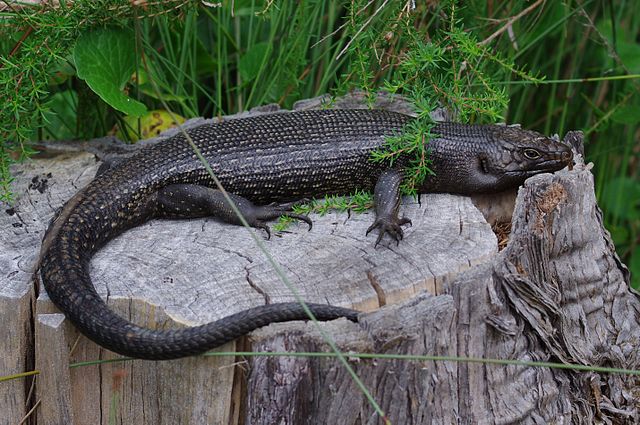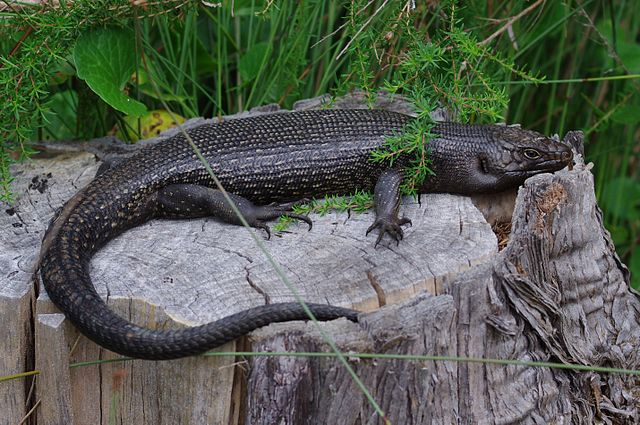The king's skink is a very large lizard native to Australia.
When a lizard loses, or “drops” its tail, for those lizards whose tail grows back, the tail is not the same functionally as that which was lost. It doesn’t grow back exactly as it was before, which can have negative effects on its mobility, defense, and social status amongst others of its species. The tail that grows back tends to be a single cartilaginous rod that has no real function, more of like a "for looks" tail than something functional.

Ken & Nyetta/Wikipedia
The king's skink is a very large lizard native to Australia.
"When the tail regenerates, it grows back as a single rod of cartilage, and it doesn't have the same vertebrae break points that it previously had, which it uses when self-amputating,” Ph.D. candidate James Barr, from Curtin's School of Molecular and Life Sciences said in a statement about his study, "Re-regeneration to reduce negative effects associated with tail loss in lizards" which is published in the journal Scientific Reports.
"This means that the next time the lizard needs to self-amputate, this would have to happen closer to the body, resulting in the loss of a larger portion of the tail. This in turn would require more energy to regrow the tail, which over time can directly affect the physical fitness and well-being of the lizard."
But there is one lizard that bucks that notion and regrows a tail that is almost as fully functional as that which was lost due to caudal autotomy (the scientific term for dropping tail), and that is the King's skink (Egernia kingii), a large lizard native to the south west region of Western Australia.
"We found these lizards were able to re-grow back a portion of their tail that had already been regenerated with a cartilage rod following a tail-loss event, such as from the bite of a predator. This is despite the cartilage rod not having any breakage planes," Ph.D. supervisor Associate Professor Bill Bateman, and a co-author of Barr's research paper, said.
"This means that not only are these animals able to regenerate their tail without a true autotomy event occurring at a breakage plane, but also conserve the time and energy into reproducing a 'complete' tail, minimizing negative effects on their fitness.
"If a lizard doesn't need to re-grow its entire tail, but rather re-grow only a necessary portion, it really could save a lot of time and energy for the lizard, which it then can divert to other activities."
The researchers say that the time and effort it takes to regrow that portion of the tail that is lost takes a lot of energy, but with the king's skink, that effort is reduced because of its capability to re-regenerate only the portion that is necessary. This minimizes the ecological costs that comes with caudal autotomy.
The king's skink is a very large skink that is native to south west Western Australia. It can grow to nearly two feed in length, including the tail, and can weigh 220 grams. The reptile feeds on plant material as well as insects and bird eggs.



